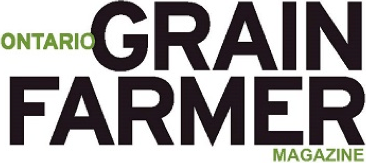Physiological races of Northern Corn Leaf Blight: Occurance, distribution and management in Ontario
Principal Investigator
Albert Tenuta
Research Institution
Ontario Ministry of Agriculture, Food and Rural Affairs (OMAFRA)
External Funding Partners
This project was supported in part by the $10.3 million Canadian Field Crop Genetics Improvement Cluster funded by the Canadian Field Crop Research Alliance (CFCRA) and Agriculture and Agri-Food Canada (AAFC) through the Industry-Led Research and Development Stream of the Growing Forward 2 AgriInnovation Program. Grain Farmers of Ontario is a founding member of the CFCRA.
This project was funded in part through Growing Forward 2 (GF2), a federal-provincial-territorial initiative. The Agricultural Adaptation Council assists in the delivery of GF2 in Ontario.
Project Start
April 2014
Project End
March 2017
Objectives
- Perform a thorough and systematic study on the identification and geographical distribution of physiological races of Northern Corn Leaf Blight (NCLB) in Ontario.
- Determine if currently available resistance genes (Ht genes) are effective against identified races.
- Conduct field management studies to determine if physiological races of NCLB react differently to the most common foliar fungicides used in Ontario corn production and how it relates to hybrid performance/interaction.
- Conduct a provincial corn disease survey where information can be added to previous surveys.
- Communicate results in various formats aimed at Ontario corn growers and other stakeholders in the provincial corn sector.
Impact
- The knowledge gained will improve the ability and capacity of corn growers to select and grow appropriate resistant hybrids in their area and make use of other highly effective disease management options such as crop rotation, fungicides, etc.
Scientific Summary
Northern corn leaf blight (NCLB) caused by Exserohilum turcicum is the most common and economically important fungal leaf disease of the $2.4 billion Ontario corn crop (in 2012). This disease appeared repeatedly in epidemic form in different parts of the world including Canada causing huge losses until the discovery and incorporation of a single dominant resistance gene (Ht1) in corn cultivars in the 1960s. The resistance conferred by Ht1 did not last long and the disease is on the rise again world-wide because of the emergence of new races of the fungus in the past two decades. The disease was well managed in the past in Canada by planting resistant hybrids, but the disease has now become the most economically important foliar leaf disease in Ontario. The ubiquitous distribution of the disease throughout the province was highlighted in recent surveys where the disease was detected in over 95% of corn fields sampled in 2011 and 85% in 2012. Thirteen physiological races (different strains of the fungus) of NCLB have been identified to date in various parts of the world. However, little information is available on the occurrence and geographical distribution of the races in Ontario.
The objective of this project is to study the occurrence and distribution of physiological races of the fungus and workout strategies for managing this economically important disease. In-field management trials will be conducted to determine differences that exist in foliar fungicide efficacy against the various NCLB races identified in Ontario. If so, determine which fungicides control which races, and if these “new” genes provide additional protection for other common corn foliar leaf diseases. In addition, single conidial isolates of NCLB from leaf samples will be collected during surveys of corn fields of Ontario. Inoculations in the greenhouse with the isolates collected from leaf samples from previous surveys to identify races and to study responses of 60 Agriculture and Agri-Food Canada (AAFC) experimental hybrids having different resistance genes.

